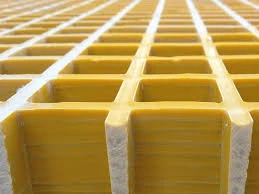loading...
- No. 9, Xingyuan South Street, Dongwaihuan Road, Zaoqiang County, Hengshui, Hebei, China
- admin@zjcomposites.com
- +86 15097380338
- Welcome to visit our website!
Innovative Fiber Reinforced Polymer Railing Solutions for Safe and Sustainable Structures
Exploring FRP Railing Systems A Modern Solution for Safety and Aesthetics
When it comes to safety in construction and architectural design, railing systems play a crucial role. Among the various materials available, Fiberglass Reinforced Polymer (FRP) has gained popularity for its unique properties and benefits. FRP railing systems are increasingly being adopted in a wide range of applications, from industrial settings to residential properties. This article delves into the features, benefits, and applications of FRP railing systems, highlighting why they are a modern solution for safety and aesthetics.
What is FRP?
Fiberglass Reinforced Polymer (FRP) is a composite material made from a polymer matrix reinforced with fiberglass. This combination results in a lightweight, strong, and durable material that is resistant to corrosion, environmental degradation, and various chemical exposures. These qualities make FRP an ideal choice for railing systems, particularly in environments where traditional materials may fail.
Key Advantages of FRP Railing Systems
1. Corrosion Resistance One of the primary benefits of FRP is its resistance to corrosion. Unlike steel or aluminum, which can rust or corrode over time, FRP maintains its integrity even when exposed to harsh chemicals, saltwater, or moisture. This makes it particularly useful in marine environments, wastewater treatment plants, and chemical processing facilities.
2. Lightweight and Strong FRP is significantly lighter than traditional materials while still offering high strength. This characteristic not only makes handling and installation easier, but it also reduces the structural load on buildings and decks, potentially lowering construction costs.
3. Low Maintenance The durability of FRP railing systems translates into low maintenance requirements. With no need for painting or regular treatments to prevent rust or corrosion, property owners can save time and money in the long run.
4. Design Flexibility FRP can be molded into various shapes and colors, offering architects and designers the flexibility to create aesthetically pleasing railings that blend with their surroundings. Whether for a modern residential home or an industrial facility, FRP can be customized to meet specific design requirements.
frp railing systems

5. Safety Features Many FRP railing systems are designed with safety in mind. They can be built to meet stringent building codes and safety regulations, with features like non-slip surfaces and appropriate heights, ensuring that they provide a secure barrier in various applications.
Applications of FRP Railing Systems
The versatility of FRP railing systems allows them to be used in a multitude of settings
- Industrial Settings FRP railings are often used in factories, chemical plants, and oil rigs where corrosive substances are common. Their ability to withstand harsh conditions makes them an ideal choice for safety barriers in these environments.
- Bridges and Walkways Because of their lightweight nature and resistance to environmental factors, FRP railings are frequently employed in pedestrian bridges, walkways, and docks.
- Residential Properties Homeowners are increasingly opting for FRP railings in decks, balconies, and staircases due to their aesthetic appeal and minimal maintenance needs.
- Public Spaces Parks, recreational areas, and public buildings benefit from FRP railings, which provide both safety and visual appeal.
Conclusion
FRP railing systems represent a modern solution that effectively combines safety, durability, and design flexibility. As industries continue to emphasize sustainable and long-lasting materials, FRP stands out as a top contender. Its corrosion resistance, lightweight nature, and low maintenance requirements contribute to its growing popularity across various sectors. Whether for industrial applications or residential projects, FRP railings are a smart choice for those looking to enhance safety while maintaining aesthetic value. As technology advances, the potential applications for FRP will likely expand, solidifying its role as an essential material in construction and design.
-
The Rise of FRP Profiles: Strong, Lightweight, and Built to LastNewsJul.14,2025
-
SMC Panel Tanks: A Modern Water Storage Solution for All EnvironmentsNewsJul.14,2025
-
GRP Grating: A Modern Solution for Safe and Durable Access SystemsNewsJul.14,2025
-
Galvanized Steel Water Tanks: Durable, Reliable, and Ready for UseNewsJul.14,2025
-
FRP Mini Mesh Grating: The Safer, Smarter Flooring SolutionNewsJul.14,2025
-
Exploring FRP Vessels: Durable Solutions for Modern Fluid HandlingNewsJul.14,2025
-
GRP Structures: The Future of Lightweight, High-Performance EngineeringNewsJun.20,2025
